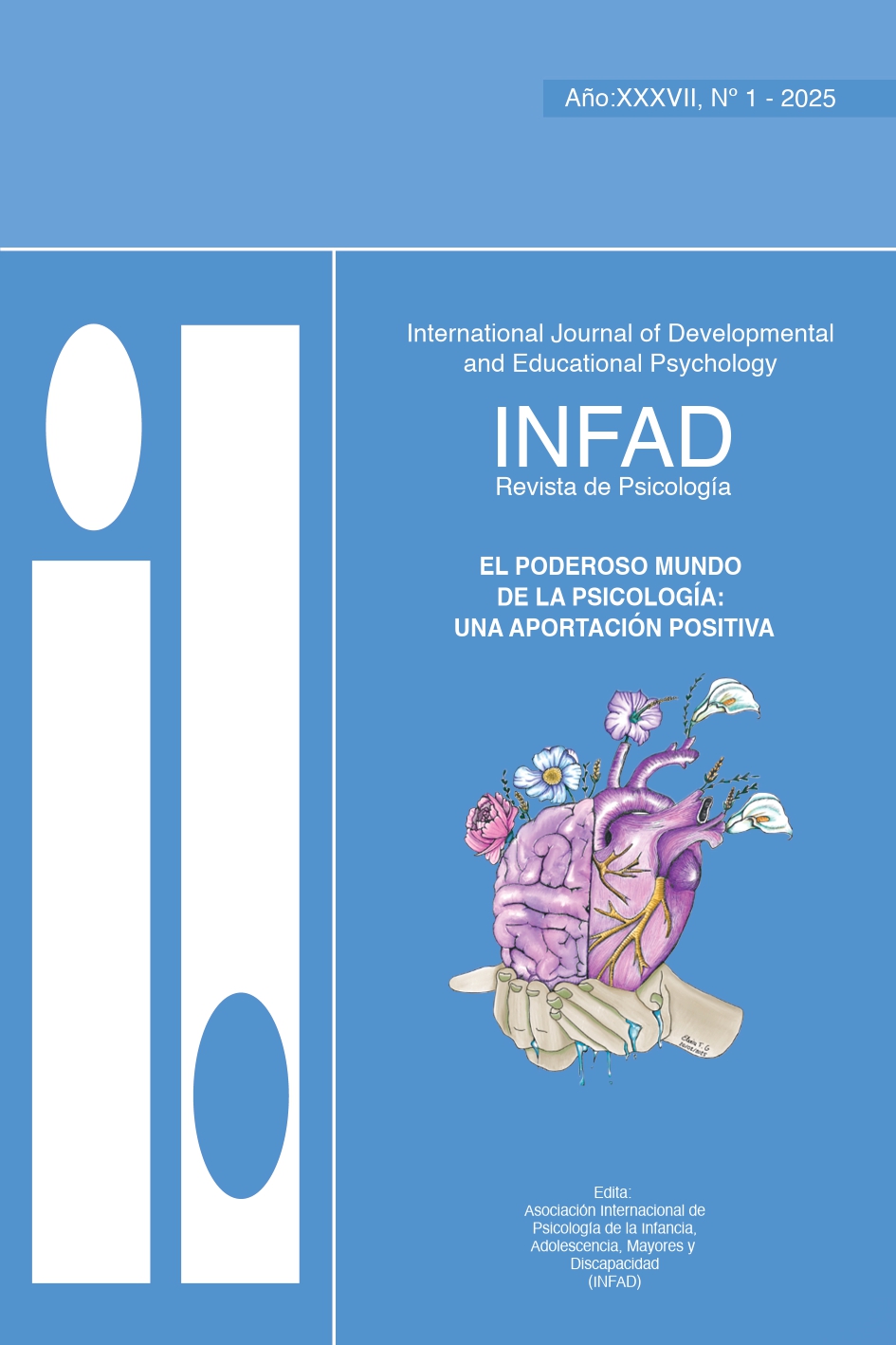Evaluation of an intensive outpatient treatment on patients with eating disorders
Main Article Content
Abstract
Objective: to evaluate the long-term effectiveness of an intensive outpatient treatment program combined with partial hospitalization for eating disorders (ED). The program consisted of three 28-week phases in a clinical setting. Methods: the total sample was 502 patients, which included 438 women and 64 men, with an age range of 13 to 73 years (M = 22.08, SD = 11.29), with four ED diagnosis: Anorexia Nervosa, Bulimia Nervosa, Binge Eating Disorder and EDNOS. The initial weight had an average of 54.89 kg with an average BMI of 21.01. Weight, eating disorder symptoms and cognitions, as well as anxiety and depression symptoms, were assessed; at the beginning, at the end and 6 and 12 months later. Results: significant differences were found at the beginning of treatment in all scales except the SCL-90 total score (F (3,498)=.94 p =.41). The comparison of demographic variables also showed significant differences between the ED diagnostic groups. All patients showed significant changes from the time of initial evaluation to the end of treatment. Results indicate small to moderate effect sizes on the EAT, HADS, and SCL-90 scales, except for the EDI, where a high effect size was found. Conclusions: our findings add to existing studies on outpatient treatment. and support the encouraging effects previously found on this type of programs that combine outpatient and inpatient treatment for eating psychopathologies.
Article Details
Section

This work is licensed under a Creative Commons Attribution-NonCommercial-NoDerivatives 4.0 International License.
Attribution — You must give appropriate credit, provide a link to the license, and indicate if changes were made. You may do so in any reasonable manner, but not in any way that suggests the licensor endorses you or your use.
NonCommercial — You may not use the material for commercial purposes.
NoDerivatives — If you remix, transform, or build upon the material, you may not distribute the modified material.

This work is licensed under a Creative Commons Attribution-NonCommercial-NoDerivatives 4.0 International License
How to Cite
References
Barriguete Meléndez, J. A., Pérez Bustinzar, A. R., Vega Morales, R. I. de la, Barriguete Chávez-Peón, P., Rojo Moreno, L., Barriguete Meléndez, J. A., Pérez Bustinzar, A. R., Vega Morales, R. I. de la, Barriguete Chávez- Peón, P., & Rojo Moreno, L. (2017). Validación de la Escala Hospitalaria de Ansiedad y Depresión en población mexicana con trastorno de la conducta alimentaria. Revista mexicana de trastornos alimentarios , 8 (2), 123-130. http://www.scielo.org.mx/scielo.php?script=sci_abstract&pid=S2007-15232017000200123&lng=es&nrm=iso&tlng=es
Colla, A., Baudinet, J., Cavenagh, P., Senra, H., & Goddard, E. (2023). Change processes during intensive day programme treatment for adolescent anorexia nervosa: A dyadic interview analysis of adolescent and parent views. Frontiers in Psychology , 14 , 1226605. https://doi.org/10.3389/fpsyg.2023.1226605
Eshkevari, E., Ferraro, I., McGregor, A., & Wade, T. (2022). Eating Disorder Day Programs: Is There a Best Format? Nutrients , 14 (4), 879. https://doi.org/10.3390/nu14040879
Galmiche, M., Déchelotte, P., Lambert, G., & Tavolacci, M. P. (2019). Prevalence of eating disorders over the 2000–2018 period: A systematic literature review. The American Journal of Clinical Nutrition , 109 (5), 1402-1413. https://doi.org/10.1093/ajcn/nqy342
Garner, D. M., Olmstead, M. P., & Polivy, J. (1983). Development and validation of a multidimensional eating disorder inventory for anorexia nervosa and bulimia. International Journal of Eating Disorders , 2 (2), 15-34. https://doi.org/10.1002/1098-108X(198321)2:2<15::AID-EAT2260020203>3.0.CO;2-6
Garner, D. M., Olmsted, M. P., Bohr, Y., & Garfinkel, P. E. (1982). The eating attitudes test: Psychometric features and clinical correlates. Psychological Medicine, 12 (4), 871-878. https://doi.org/10.1017/s0033291700049163
Grau Touriño, A., Feixas, G., Medina, J. C., Paz, C., & Evans, C. (2021). Effectiveness of integrated treatment for eating disorders in Spain: Protocol for a multicentre, naturalistic, observational study. BMJ Open , 11 (3), e043152. https://doi.org/10.1136/bmjopen-2020-043152
Hayes, N. A., Welty, L. J., Slesinger, N., & Washburn, J. J. (2019). Moderators of treatment outcomes in a partial hospitalization and intensive outpatient program for eating disorders. Eating Disorders , 27 (3), 305-320. https://doi.org/10.1080/10640266.2018.1512302
Herpertz-Dahlmann, B. (2021). Intensive Treatments in Adolescent Anorexia Nervosa. Nutrients , 13 (4), 1265. https://doi.org/10.3390/nu13041265
Hilbert, A., Pike, K. M., Goldschmidt, A. B., Wilfley, D. E., Fairburn, C. G., Dohm, F.-A., Walsh, B. T., & Striegel Weissman, R. (2014). Risk factors across the eating disorders. Psychiatry Research , 220 (1-2), 500-506. https://doi.org/10.1016/j.psychres.2014.05.054
Ortiz, A. M. L., Cusack, C. E., Billman, M. G., & Essayli, J. H. (2023). Baseline symptomatology and treatment outcomes of young adults in a virtual versus in person partial hospitalization and intensive outpatient program for eating disorders. International Journal of Eating Disorders, 56 (8), 1644-1649. https://doi.org/10.1002/eat.23968
Panea-Pizarro, I., Moran, J. M., Lavado-García, J., Beato-Fernández, L., Domínguez-Martin, A. T., Huerta-González, S., Novo, A., Pedrera-Zamorano, J. D., & López-Espuela, F. (2021). Health-Related Quality of Life in Spanish Women with Eating Disorders. Nutrients , 13 (2), 403. https://doi.org/10.3390/nu13020403
Vázquez Arévalo, R., Aguilar, X. L., Ocampo Tellez-Girón, M. T., & Mancilla-Diaz, J. M. (2015). Eating disorders diagnostic: From the DSM-IV to DSM-5. Revista Mexicana de Trastornos Alimentarios , 6 (2), 108-120. https://doi.org/10.1016/j.rmta.2015.10.003
Williamson, D. A., Anderson, D. A., Jackman, L. P., & Jackson, S. R. (1995). Assessment of eating disordered thoughts, feelings, and behaviors. En Handbook of assessment methods for eating behaviors and weight-related problems: Measures, theory, and research (pp. 347-386). Sage Publications, Inc.

